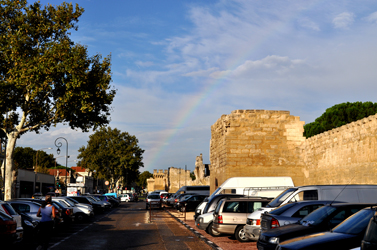 |
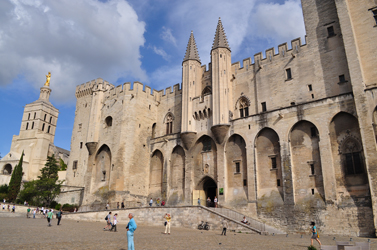 |
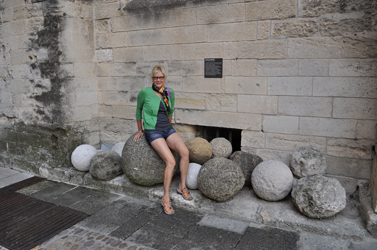 |
|
Rainbow at main entrance to Avignon |
Papal Palace |
Catapult balls, Papal Palace, 1300s |
Avignon is a walled city that was the center of Roman Catholicism in the 1300s. The pope couldn't make it to Rome because of the wars following his election, so he set up in Avignon, where popes based for the next hundred years. Towards the end, the Italians inevitably elected their own pope to make use of Vatican complex, so there were duelling popes for several reigns. For Avignon, it meant an entire civil and diplomatic service needed to be officed, housed and accommodated, and trade ballooned, giving the town wealth and stability during the otherwise miserable middle ages.
We were in the southeast corner of the city, across from Rue des Teinturiers, the funky, cobblestoned, winding street of outdoor cafes, bars and restaurants, and which leads directly to Les Halles, the indoor market with the outdoor vegetal wall. We could walk 12 minutes to the train station, or just inside the walls, to the €1.30 shuttle bus that takes you to and from the new TGV station just southwest of town. As ever in western Europe, public transport trumps all.
So we took side trips, of course. In Arles, all of 15 minutes away, where Monet and Van Gogh came to paint, we toured the 2000 year old Roman ampitheatre, where they still perform plays all summer, as well the Roman Forum, which is in better shape than the original in Rome. We also went to Marseille, founded just 2,600 years ago, with its booming construction in the harbor area, and clean, tidy cramped old quarter, where we had the best meal of our trip at Vinonen in Place Daviel. I had a plate I call Tomatoes Gone Wild, with four different sections employing local tomatoes differently: diced over a mushroom spread on toast, paste over a lovely grahamy sort of pizza dough, and a tomato/basil sorbet. And matching local wine, of course. Nancy had the chevre salad - best ever anywhere, she says.
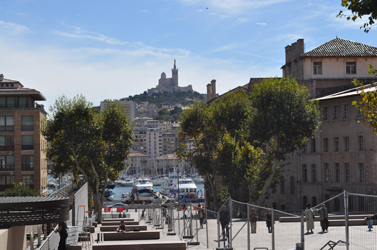 |
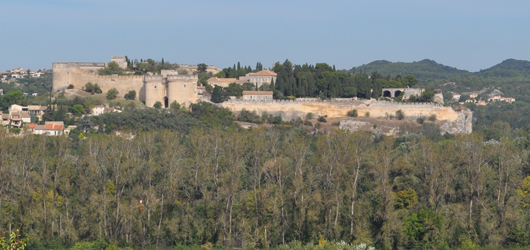 |
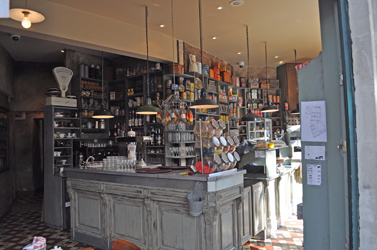 |
|
Marseille harbor & cathedral, from Place Daviel |
Papal summer home, Villeneuve, Provence |
Ginette & Marcel Cafe, Avignon |
Back in Avignon, we ate a Ginette & Marcel's cafe (25 Place se Corps Saints), as authentic a French cafe as there could possibly be, where most of the menu is simply tartineries- spreads on great country bread. We walked across the Rhone to Villenueve, wehre the pope had his country estate, a fortreess of course, and an office block for the civil service. You can see the summer home from the papal palace, and vice versa. And of course, you couldn't come to Avignon without walking the famous Pont d'Avignon, which no longer makes it all the way across the Rhône. And temperatures in the low 20s (high 60s) made it easy to be out walking all day, which was convenient, because we were. Another great time in France.
.

